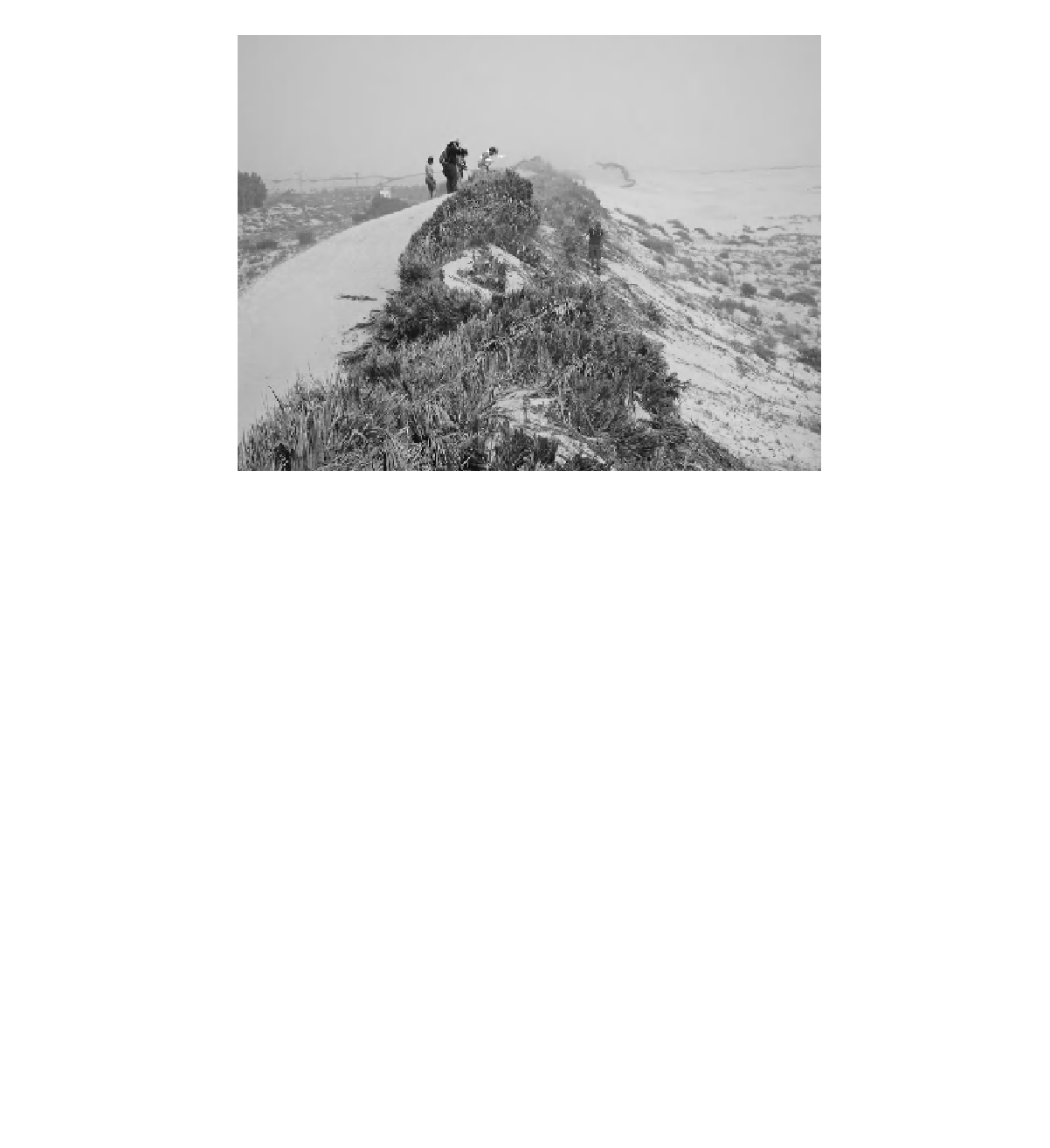Geoscience Reference
In-Depth Information
Figure 23.2
A sand fence protecting a road (on the left of the picture) in southern Tunisia. This fence is made from interwoven
palm leaves that reduce wind speeds at the crest of the artificially created dune and encourage sand deposition. The fence is
replaced every few years as the dune grows (photo: author).
fence decrease, but the amount of sheltered area increases
as the downwind length of the reverse flow region ex-
pands (Bofah and Al-Hinai, 1986; Lee, Park and Park,
2002). A drawback with using sand fences is that as the
sand builds up around the fence they require replacement
so that they do not become buried and overwhelmed. Thus
a maintenance plan for sand fences needs to be adhered to
(Figure 23.2).
Reed checkerboards
(1 m
2
and 0.15-0.2 m in height)
were also established across much of the moving dune
surfaces. These raised the aerodynamic roughness length
(
z
0
) of the surface by up to 400-600 times (Dong
et al.
,
2004) and so significantly reduced surface wind speeds
(Liu, 1987). The checkerboards remain intact for a period
of 4-5 years during which time planted xerophytic shrubs
can become established (Mitchell
et al.
, 1998). Mitchell
et al.
(1988) report that using checkerboards can transform
an area with shifting sands and less than 5 % vegetation
cover to areas of fixed dunes with 30-50 % cover within a
few years. Where steep sand surfaces were created along
road embankments erosion was reduced by using
chemical
and clay fixers
to cement the sediment. These fixers in-
cluded clay mixed with local saline groundwater and also
emulsified crude oil and asphalt. Finally,
saline-tolerant
vegetation cover
was established in areas where pumping
of shallow groundwater could be achieved. Used in com-
sand free for a period of at least 8 years (Dong
et al.
,
2004).
This combination of control measures is commonly
used for sand and dune control and similar engineering
approaches have been taken to protect the Shapotou sec-
tion of the Baotou-Lanzhou Railway (where the checker-
board control system was developed) across the Tengger
Desert (Zhang
et al.
, 2007; Qiu
et al.
, 2004) and also the
Qinghai-Tibet Railway (Zhang
et al.
, 2010). The checker-
board method of sand control has also been extensively
used in China and elsewhere to stabilise surfaces around
oases threatened by sand drift and mobile dunes (Zhang
et al.
, 2004) and also to enable reclamation of degraded
agricultural land (Li
et al.
, 2009). Research has shown that
after a period of decades the soil within the checkerboards
shows an increase in silt and clay content and raised levels
of soil carbon and nitrogen that support a diversified plant
and vegetative canopy that is extremely effective at long-
term control of sand drift and dune movement (Mitchell
et al.
, 1998; Li
et al.
, 2006, 2009; Su
et al.
, 2007).
23.2.2
Human disturbance of stable surfaces
Some of the most serious gemorphological hazards in dry-
lands are created by the human disturbance of otherwise

